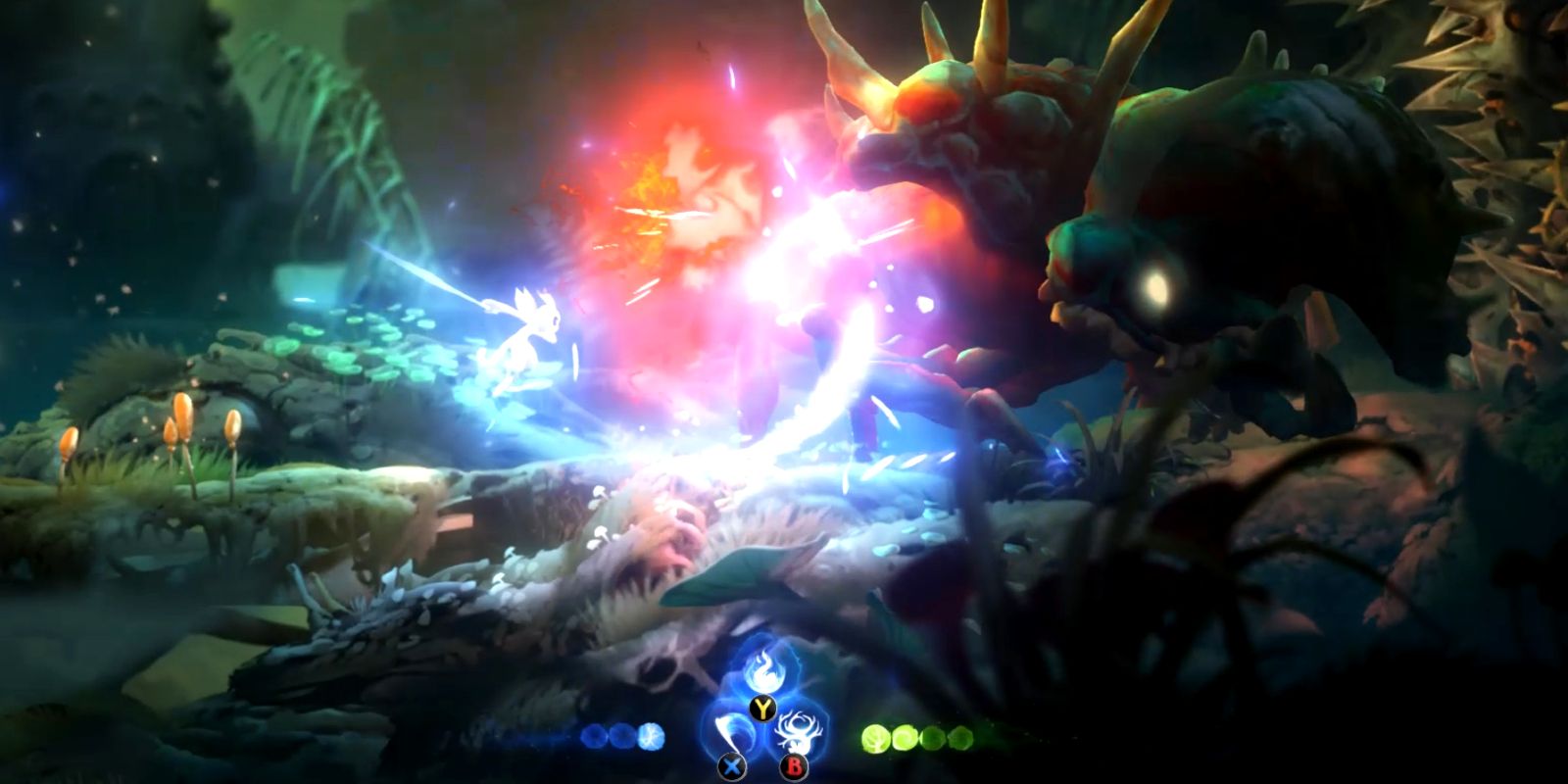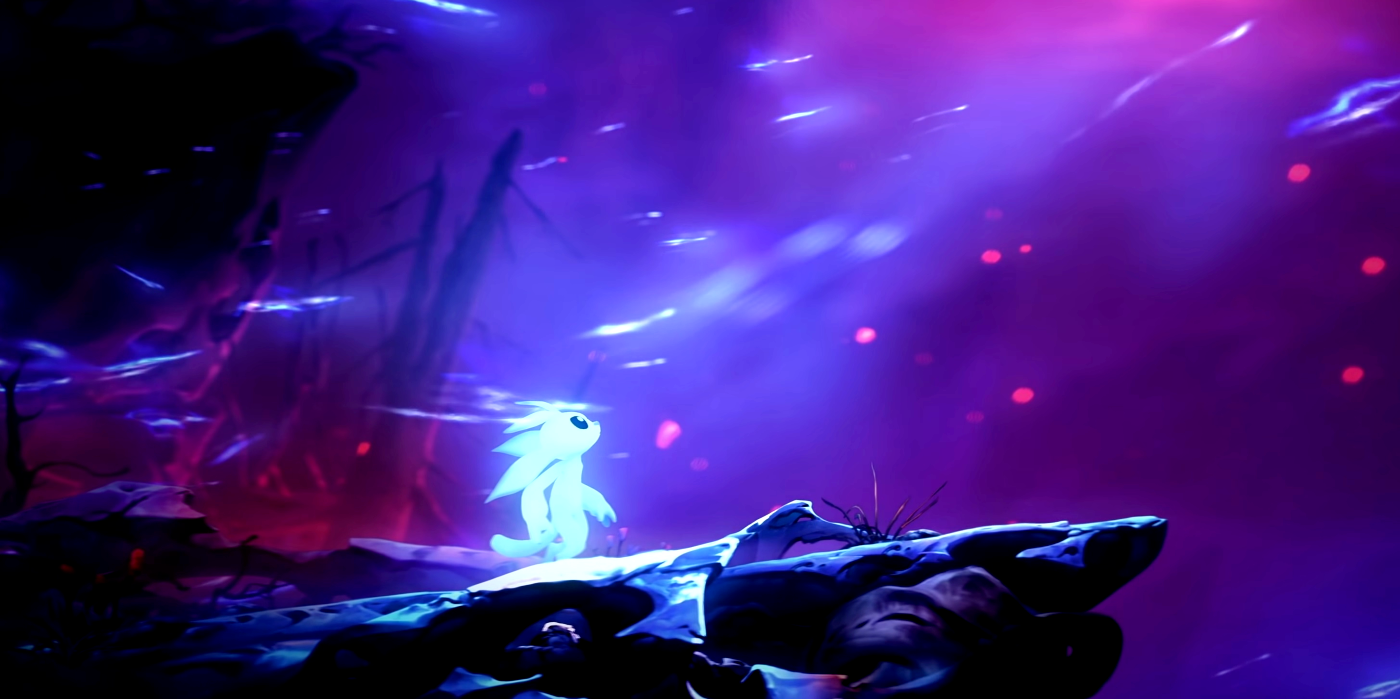As the direct sequel to one of the best games of 2015, Ori and the Will of the Wisps has a lot to live up to. Indie developer Moon Studios became an overnight sensation after the release of the original Ori and the Blind Forest, their very first game. Blind Forest‘s exceptional quality endeared it to countless players; the stunning production values, smooth but challenging platforming, and emotional story all blended together into one excellent Metroidvania. Another entry in the series was all but inevitable – and now that next entry has arrived at last. After five years in development, Ori and the Will of the Wisps emerges as a stellar sequel that improves on its predecessor in nearly every way.
Picking up right where the first game left off, our adorable forest spirit Ori is peacefully spending their days with their surrogate family after saving the sacred forest of Nibel. The newest member of this surrogate family is an owlet named Ku, who was rescued as an egg after the final events of Blind Forest. Ku was born with a featherless wing, but becomes more and more desperate to fly as she continues to grow. One day, Ori devises a way for Ku to fly using her late mother’s feather and the two of them take off on a spectacular flight. Suddenly, a vicious storm pulls them off course and sends them plummeting into the neighboring land of Niwen. Ori and Ku are separated during the fall, so Ori sets out to find her before something else does in this dangerous and corrupted place.
Even before the actual gameplay begins, Will of the Wisps‘ presentation is downright breathtaking. The lush, hand-drawn environments are so intricately detailed and gorgeous that almost any given frame could be its own painting. The hauntingly beautiful orchestral soundtrack mixes perfectly with the art design to make each area memorable in its own way, whether it be a sunlit forest glade or a moldy pitch-black cavern. Smooth 2.5D animation ties it all together as Ori gracefully bounds over gnarled branches and cracked stones, which all shift and creak in response. Moon Studios has crafted another audiovisual triumph, and it’s kind of hard to believe that such a lovely game was achieved with the often-jagged graphics of the Unity engine.

The greatest difference between Will of the Wisps and Blind Forest lies in the new combat system. Combat has been completely overhauled for the sequel, and it is a massive improvement. While Blind Forest had passive, boring combat that mostly involved getting just close enough to mash out homing shots at enemies, Will of the Wisps is built around acrobatic melee combat and interchangeable skills. Rapid blade attacks combine with Ori’s graceful platforming abilities to create dance-like battles, and collectable skill shards open the door to different builds and attack patterns. Bosses are also designed with this in mind, and they’re much more enjoyable (and much more deadly) as a result. Platforming and puzzles incorporate a wide variety of mobility options for an excellent sense of challenge, demanding that the player actively think about their next move at all times. Gameplay in Will of the Wisps is consistently exhilarating, and the revamped combat brings it up to speed with the best modern Metroidvanias like Hollow Knight and Dead Cells.
The game also has a remarkably engaging story that goes hand-in-hand with its gameplay. While it comes off as a fairly simple tale at first, it soon raises its emotional stakes with darker turns and revelations. Sure, a lot of that still comes down to its Disney-like melodrama, but Will of the Wisps has both a whimsical storybook quality and a genuine sense of consequence. The themes of the plot make it clear that the past can’t be undone, everything has its price, and not everyone will have a happy ending. Still, the game is also focused on restoring and maintaining hope for the future, especially in the newly-implemented sidequests that feature a host of colorful and surprisingly well-written characters. The most impressive thing about the storytelling in Will of the Wisps is that it manages to make you care about the fate of this world and the characters in it, even when you think you’ve worked everything out.

There isn’t much to dislike about Will of the Wisps itself, but the game does have noticeable technical problems at the time of writing. Over the course of this review, the game stuttered when entering new areas, had a number of audio and movement bugs, and needed to be reinstalled twice when it wouldn’t load a save. A day one patch is forthcoming and will supposedly fix these issues, though it isn’t clear when. On the more long-term side, Will of the Wisps doesn’t have much in the way of replay value. Besides the obligatory hard mode and a limited number of competitive time trials, you’ll have done everything there is to do in the game once the relatively simple sidequests and collectibles are complete. There aren’t a huge amount of either of them, and neither are really necessary to conquer some major challenge. This is more of a mild disappointment than a problem, but many players will probably want to jump back in after finishing the main game, and it would have been nice to have some more to dig into.
All things considered, Ori and the Will of the Wisps is a splendid sequel that undoubtedly surpasses the original. Moon Studios has outdone itself and given us another of the best Metroidvanias on the market, even now that that market is certainly larger than it was five years ago. With marvelous presentation, thrilling gameplay, and an affecting story, the game is a home run and has us very interested in what Moon Studios is developing next.
Ori and the Will of the Wisps is now available on Windows PC and Xbox One for $29.99. A Windows PC code was provided to Screen Rant for the purposes of this review.




